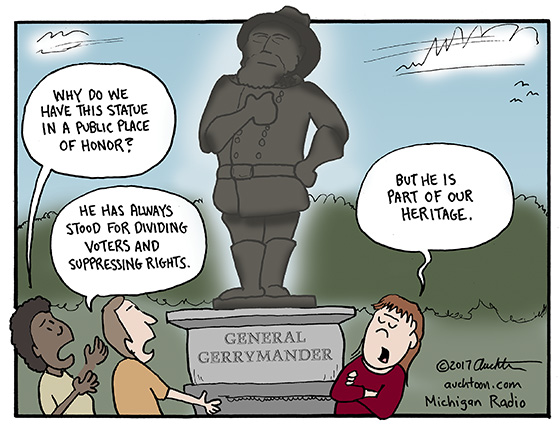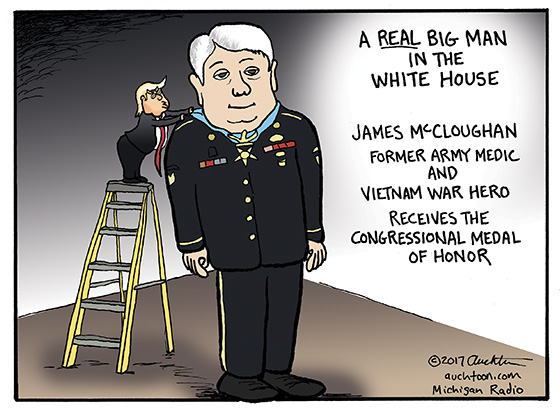Why Are We Honoring General Gerrymander?
I struggled with how exactly to draw a gerrymander statue. My initial instinct was to draw it as an abstract monster because that’s where the term came from. In 1812 a Governor Gerry in Massachusetts signed a bill to redistrict his state to benefit his political party. One of the oddly shaped districts resembled a salamander. A famous editorial cartoon exaggerated the district shape as a monster, and thus Gerry plus salamander became gerrymander.
But then I figured most readers would be more visually familiar with a civil war statue than an editorial cartoon from 1812 (however famous), so I settled on General Gerrymander. (Of course it would have been much better to have the General on horseback, but I’m terrible at drawing horses.)
This also allowed me to more directly address the ongoing issue of venerating those who fought on the wrong side of the American Civil War. My thoughts: Cemeteries are good places to memorialize the dead. Museums are great places to remember leaders of the past. And books are fantastic places to document and add context to both.
But let’s reserve public places of honor (town squares, monument rows, etc.) for the honorable. Tradition and heritage are good — until they start to choke us. We live in a dynamic country, and we are blessed to have a system designed to accommodate change. Let’s take advantage of that.
As for gerrymandering, I know it’s against our human nature, but we would be better off not thinking in terms of sides and avoid attempts to unfairly leverage advantages. The goal should be to create the most equitable districts possible and let the best ideas win. (Then again, I would ideally take the time to learn how to draw horses, but I doubt that’s ever going to happen.)






